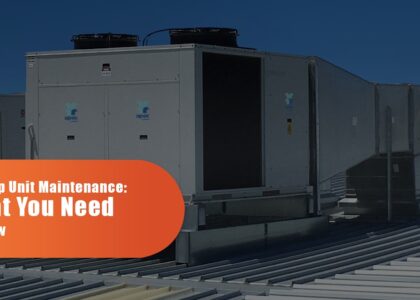When it comes to HVAC systems, there are various components that work together to provide efficient heating, ventilation, and cooling. Two common components are the Air Handling Unit (AHU) and the Rooftop Units Services (RTU).
While both AHUs and RTUs play crucial roles in HVAC systems, they have distinct differences. In this blog post, presented by Sentral HVAC & Plumbing, a trusted provider of home maintenance services in Mississauga, Oakville, Burlington, Milton, Etobicoke, Brampton, Toronto, and Hamilton, we will demystify the differences between AHUs and RTUs, helping you understand their unique functionalities.
What is an Air Handling Unit (AHU)?
An Air Handling Unit, commonly referred to as an AHU, is a central component of an HVAC system responsible for circulating and conditioning air within a building. It is typically located indoors and connects to the ductwork that distributes the conditioned air throughout the building. AHUs are commonly found in commercial buildings and large residential complexes.
Functionality of an AHU
The primary function of an AHU is to handle and condition the air by performing the following tasks:
- Air Filtration: AHUs are equipped with air filters that remove dust, pollen, and other airborne particles from the incoming air. This ensures that the air circulated within the building is clean and free from contaminants.
- Temperature Regulation: AHUs are responsible for heating or cooling the air to maintain a comfortable indoor temperature. They achieve this by passing the air through a heat exchanger or a cooling coil, depending on the desired temperature.
- Humidity Control: AHUs can also control the humidity levels within a building. They achieve this by incorporating humidifiers or dehumidifiers, depending on the specific requirements of the space.
What is a Rooftop Unit (RTU)?
A Rooftop Unit, commonly known as an RTU, is an HVAC system component that is installed on the roof of a building. RTUs are self-contained units that house all the necessary components for heating, cooling, and ventilation in a single package. They are commonly found in commercial buildings, retail stores, and smaller residential buildings.
Functionality of an RTU
The functionality of an RTU is similar to that of an AHU, but with some important distinctions:
- Compact Design: RTUs are designed to be compact and self-contained, with all the necessary components, including the compressor, condenser, evaporator, fans, and filters, housed in a single unit. This makes installation and maintenance easier, as all components are readily accessible.
- Outdoor Installation: RTUs are specifically designed for outdoor installation on the roof of a building. This placement allows for efficient air intake and discharge, minimizing the impact on indoor space.
- Easy Installation and Maintenance: Due to their self-contained design, RTUs are relatively easy to install and maintain. They can be quickly replaced or repaired if needed, without disrupting the building’s occupants.
- Energy Efficiency: RTUs often incorporate energy-efficient features, such as variable speed fans, economizers, and advanced controls, to optimize energy consumption and reduce operating costs.
Key Differences Between AHUs and RTUs
While both AHUs and RTUs serve the purpose of conditioning and distributing air within a building, they differ in several significant ways:
- Location: AHUs are typically located indoors, connected to the ductwork system, while RTUs are installed on the roof, providing a compact and self-contained HVAC solution.
- Size and Capacity: AHUs are generally larger and have higher capacity compared to RTUs. This makes AHUs suitable for larger commercial buildings with extensive ductwork systems, while RTUs are often used in smaller buildings or where space constraints exist.
- Installation Flexibility: AHUs offer more installation flexibility since they can be placed in various locations within a building. In contrast, RTUs are specifically designed for rooftop installation.
- Maintenance and Accessibility: AHUs require indoor access for maintenance and repair, which can be more time-consuming and disruptive. RTUs, on the other hand, are easily accessible on the roof, making maintenance and repairs more convenient.
Professional Guidance for HVAC System Selection
Choosing the right HVAC system components, such as AHUs or RTUs, depends on various factors, including the size of the building, the specific requirements of the space, and the budget. Consulting with a professional HVAC technician is crucial to ensure the correct selection and optimal performance of your HVAC system.
Understanding the differences between AHUs and RTUs is essential when it comes to selecting the right HVAC system components for your building. While AHUs are typically located indoors and handle the air conditioning and distribution, Rooftop Units Services In Mississauga are compact, self-contained units installed on the roof.
By partnering with Sentral HVAC & Plumbing, a leading provider of home maintenance services in Mississauga, Oakville, Burlington, Milton, Etobicoke, Brampton, Toronto, and Hamilton, you can receive expert guidance on selecting and maintaining the right HVAC system components for your specific needs.
Contact us today to ensure optimal comfort and efficiency in your building.





